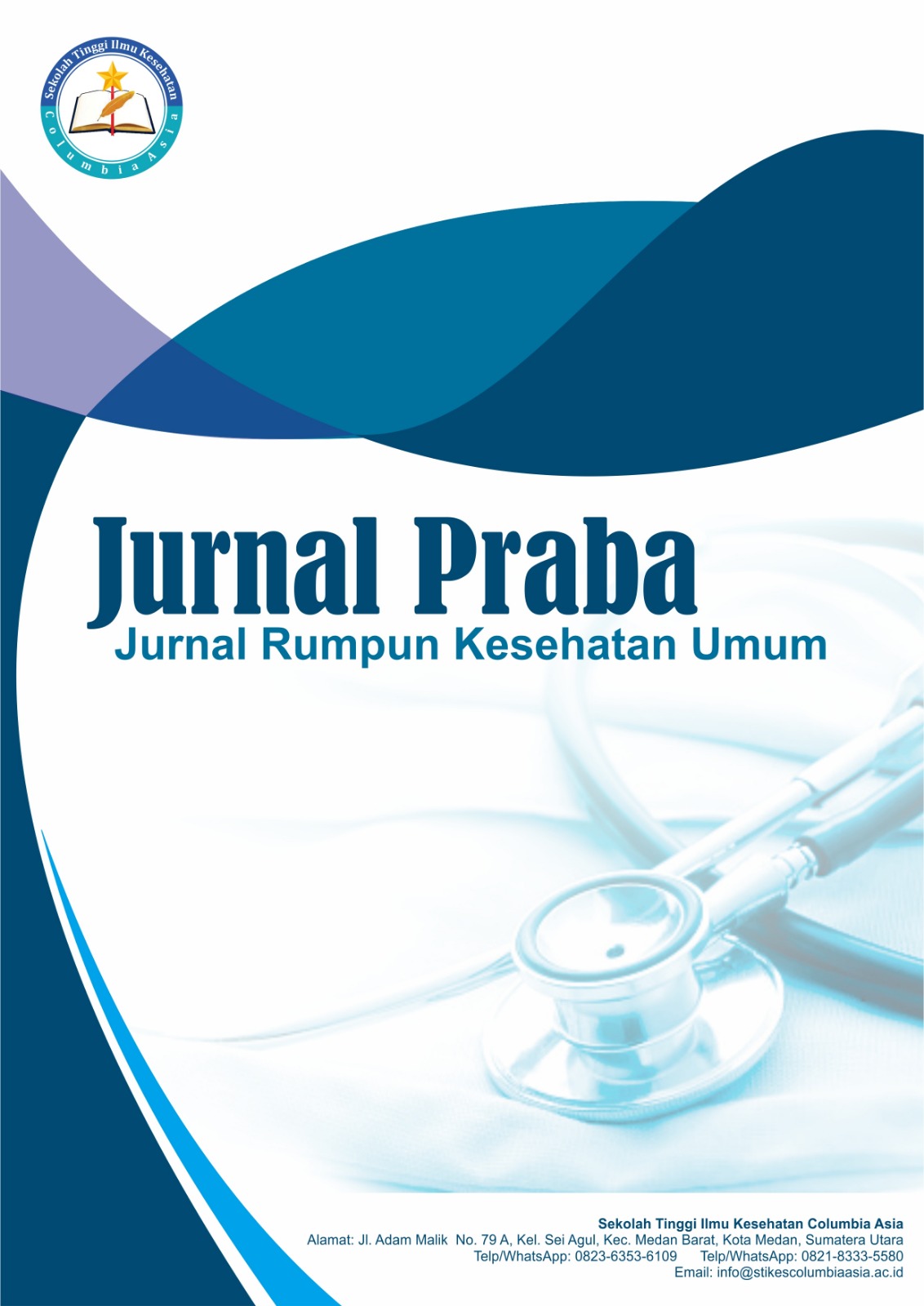Peran Badan Pengawas Obat dan Makanan (BPOM) dalam Strategi Nasional Pengendalian Antimikroba Tahun 2025-2029
DOI:
https://doi.org/10.62027/praba.v3i2.365Keywords:
Antimicrobial Resistance, BPOM, Drug Supervision, Health Policy, One HealthAbstract
Antimicrobial resistance (AMR) is a major global threat, contributing to high mortality and infectious complications worldwide. In response, Indonesia has developed the National Strategy for the Control of Antimicrobial Resistance in the Health Sector for 2025–2029. Within this framework, the National Agency of Drug and Food Control (BPOM) plays a strategic role both as a lead organizer and partner in implementing cross-sectoral interventions. BPOM is involved in drafting regulations, supervising the distribution and use of antimicrobials, and conducting public education programs. Its role aligns with the people-centred and One Health approaches, emphasizing multi-sectoral collaboration and community engagement in AMR control. This study applies a normative legal approach based on literature and regulatory analysis to evaluate BPOM’s role in the national strategy.
References
Ahmad, M., & Khan, A. U. (2019). Global economic impact of antibiotic resistance: A review. Journal of Global Antimicrobial Resistance, 19, 313–316.
Antimicrobial Resistance Collaborators. (2022). Global burden of bacterial antimicrobial resistance in 2019: A systematic analysis. The Lancet, 399(10325), 629–655.
BPOM RI. (2018). Peraturan Badan Pengawas Obat dan Makanan Republik Indonesia Nomor 4 Tahun 2018 tentang Pengawasan Pengelolaan Obat, Bahan Obat, Narkotika, Psikotropika dan Prekursor Farmasi di Fasilitas Pelayanan Kefarmasian. Badan Pengawas Obat dan Makanan RI.
BPOM RI. (2020). Keputusan Kepala Badan Pengawas Obat dan Makanan Republik Indonesia No.HK.02.02.1.2.03.20.98 Tahun 2020 tentang Peta Jalan Rencana Aksi Pengendalian Antimicrobial Resistance (AMR) di Lingkungan BPOM Tahun 2020–2024. Badan Pengawas Obat dan Makanan RI.
BPOM RI. (2023). Peraturan Badan Pengawas Obat dan Makanan Republik Indonesia Nomor 8 Tahun 2023 tentang Pedoman Penilaian Khasiat dan Keamanan Obat Antibakteri. Badan Pengawas Obat dan Makanan RI.
Emelda, A., Yuliana, D., Maulana, A., Kurniawati, T., & Utamil, W. Y. (2023). Gambaran penggunaan antibiotik pada masyarakat di Pasar Niaga Daya Makassar. Indonesian Journal of Community Dedication (IJCD), 5, 13–18.
Founou, R. C., Blocker, A. J., Noubom, M., Tsayem, C., Choukem, S. P., van Dongen, M., et al. (2021). The COVID-19 pandemic: A threat to antimicrobial resistance containment. Future Science OA, 7(8), FSO736.
Friedman, N. D., Temkin, E., & Carmeli, Y. (2016). The negative impact of antibiotic resistance. Clinical Microbiology and Infection, 22(5), 416–422.
Gach, M. W., Lazarus, G., Simadibrata, S. M., et al. (2024). Antimicrobial resistance among common bacterial pathogens in Indonesia: A systematic review. The Lancet Regional Health – Southeast Asia, 26, 1–14.
Izati, M., Husni, P., & Mustofa, Y. A. (2024). Peran Badan Pengawas Obat dan Makanan (BPOM) dalam pengendalian resistensi antimikroba di Indonesia. OBAT: Jurnal Riset Ilmu Farmasi dan Kesehatan, 2(4), 236–248.
Kemenkes RI. (2024). Agar mikroba tak perkasa. MEDIAKOM.
Kemenkes RI. (2024). Strategi Nasional Pengendalian Resistensi Antimikroba Sektor Kesehatan Tahun 2025–2029. Kementerian Kesehatan RI.
Kemenko PMK RI. (2021). Peraturan Menteri Koordinator Bidang Pembangunan Manusia dan Kebudayaan Republik Indonesia Nomor 7 Tahun 2021 tentang Rencana Aksi Nasional Pengendalian Resistensi Antimikroba Tahun 2020–2024. Kemenko PMK RI.
Maraz, K. M., & Khan, R. A. (2021). An overview on impact and application of microorganisms on human health, medicine and environment. GSC Biological and Pharmaceutical Sciences, 16(1), 89–104.
Marston, H. D., Dixon, D. M., Knisely, J. M., Palmore, T. N., & Fauci, A. S. (2016). Antimicrobial resistance. JAMA, 316(11), 1193–1204.
Murray, C. J., Ikuta, K. S., Sharara, F., Swetschinski, L., Robles Aguilar, G., Gray, A., Han, C., Bisignano, C., Rao, P., Wool, E., et al. (2022). Global burden of bacterial antimicrobial resistance in 2019: A systematic analysis. The Lancet, 399, 629–655.
Padoli, P. (2016). Modul bahan ajar cetak keperawatan: Mikrobiologi dan parasitologi keperawatan. Kementerian Kesehatan Republik Indonesia.
Presiden RI. (2017). Peraturan Presiden Nomor 80 Tahun 2017 tentang Badan Pengawas Obat dan Makanan. Presiden Republik Indonesia.
Prestinaci, F., Pezzotti, P., & Pantosti, A. (2015). Antimicrobial resistance: A global multifaceted phenomenon. Pathogens and Global Health, 109(7), 309–318.
Rahmawati, Y. (2023). The role of the POM Agency in controlling antimicrobial resistance as implementation of Health Law Number 36 of 2009. Indonesia Private Law Review, 4(2), 67–76.
Sinto, R. (2020). Peran penting pengendalian resistensi antibiotik pada pandemi COVID-19. Jurnal Penyakit Dalam Indonesia, 7(4), 194–195.
Teillant, A., Gandra, S., Barter, D., Morgan, D. J., & Laxminarayan, R. (2015). Potential burden of antibiotic resistance on surgery and cancer chemotherapy antibiotic prophylaxis in the USA: A literature review and modelling study. The Lancet Infectious Diseases, 15(12), 1429–1437.
Tjay, T. H., & Rahardja, K. (2015). Obat-obat penting: Khasiat, penggunaan dan efek-efek samping. Elex Media Komputindo.
Török, M. E., Moran, E., & Cooke, F. J. (2017). Oxford handbook of infectious diseases and microbiology (2nd ed.). Oxford University Press.
World Health Organization. (2023). People-centred approach to addressing antimicrobial resistance in human health: WHO core package of interventions to support national action plans. WHO.
Downloads
Published
How to Cite
Issue
Section
License
Copyright (c) 2025 Jurnal Praba : Jurnal Rumpun Kesehatan Umum

This work is licensed under a Creative Commons Attribution-ShareAlike 4.0 International License.







